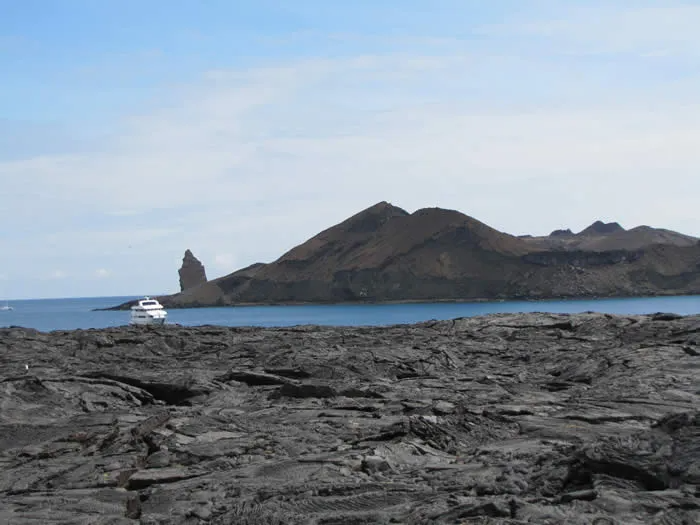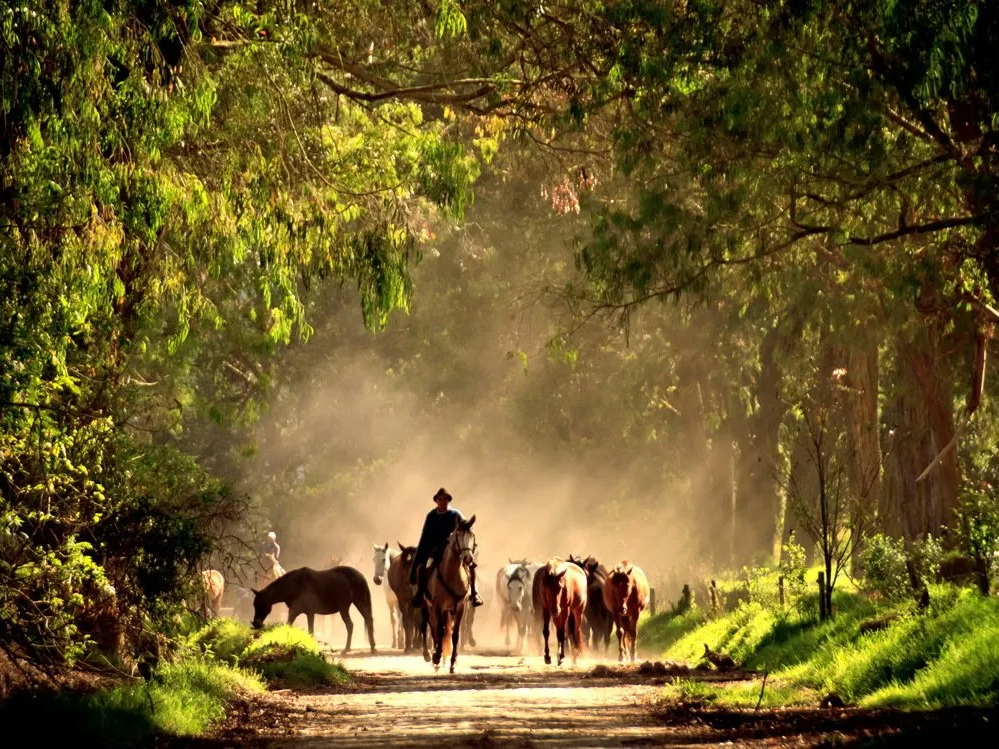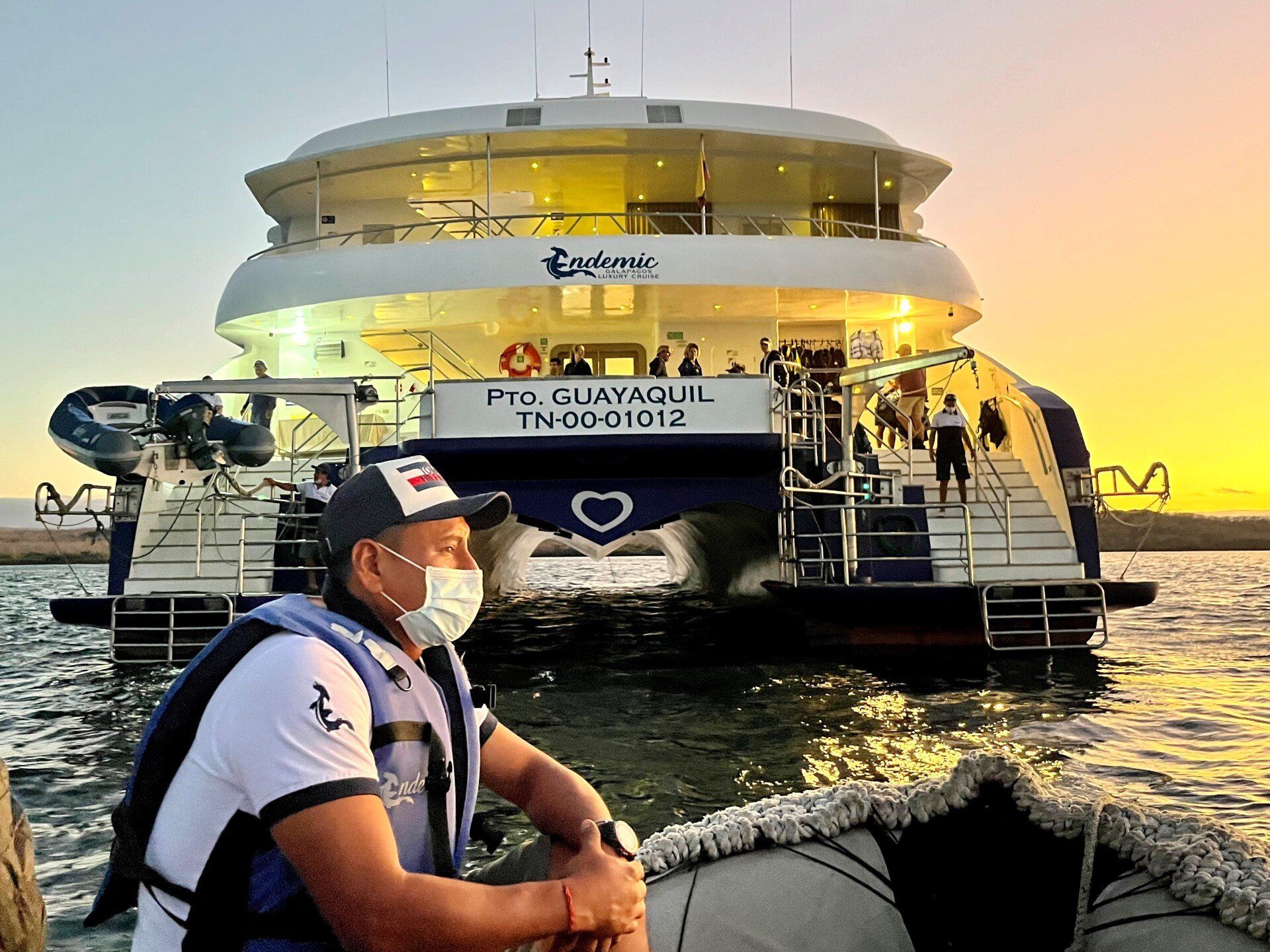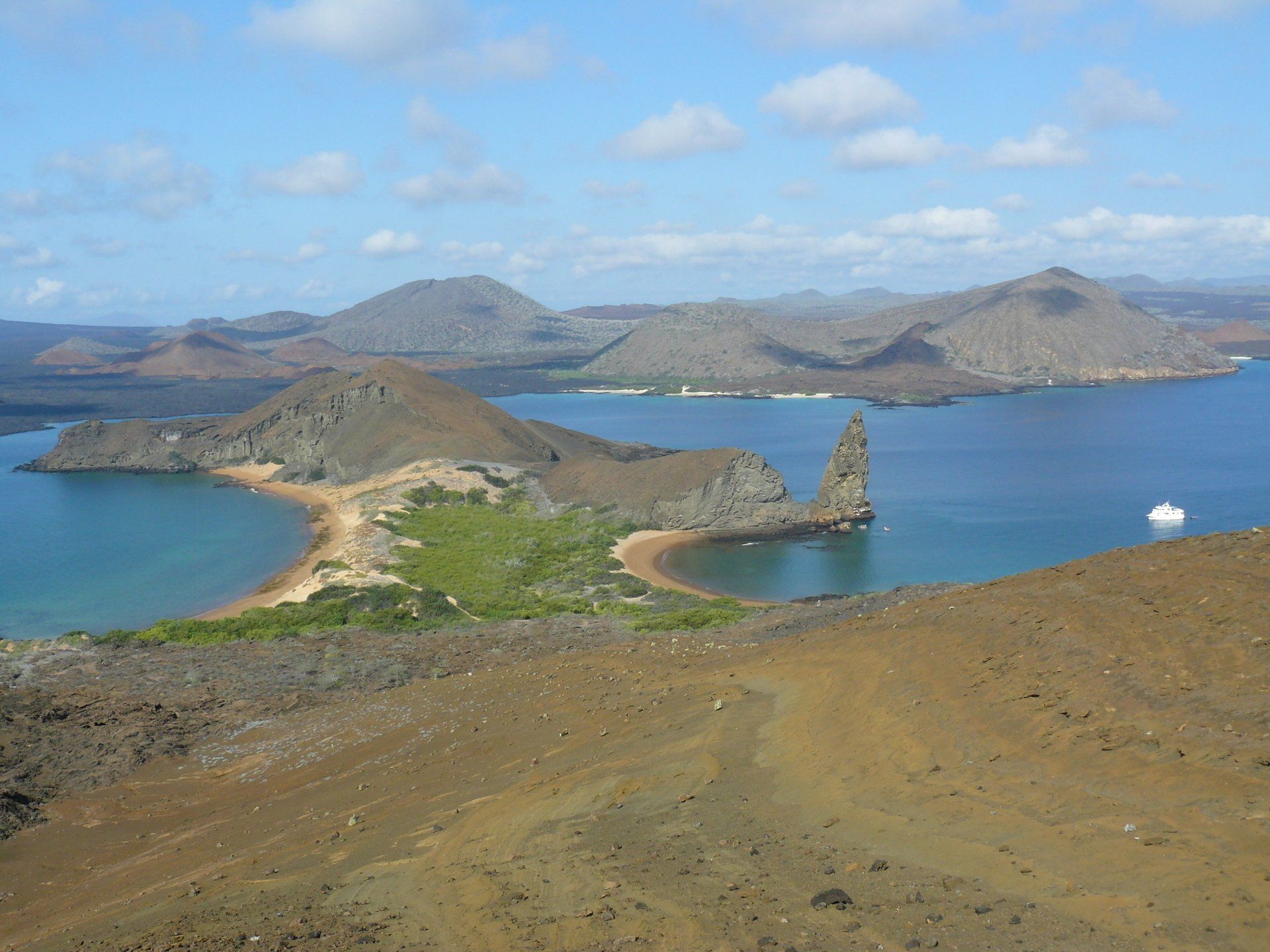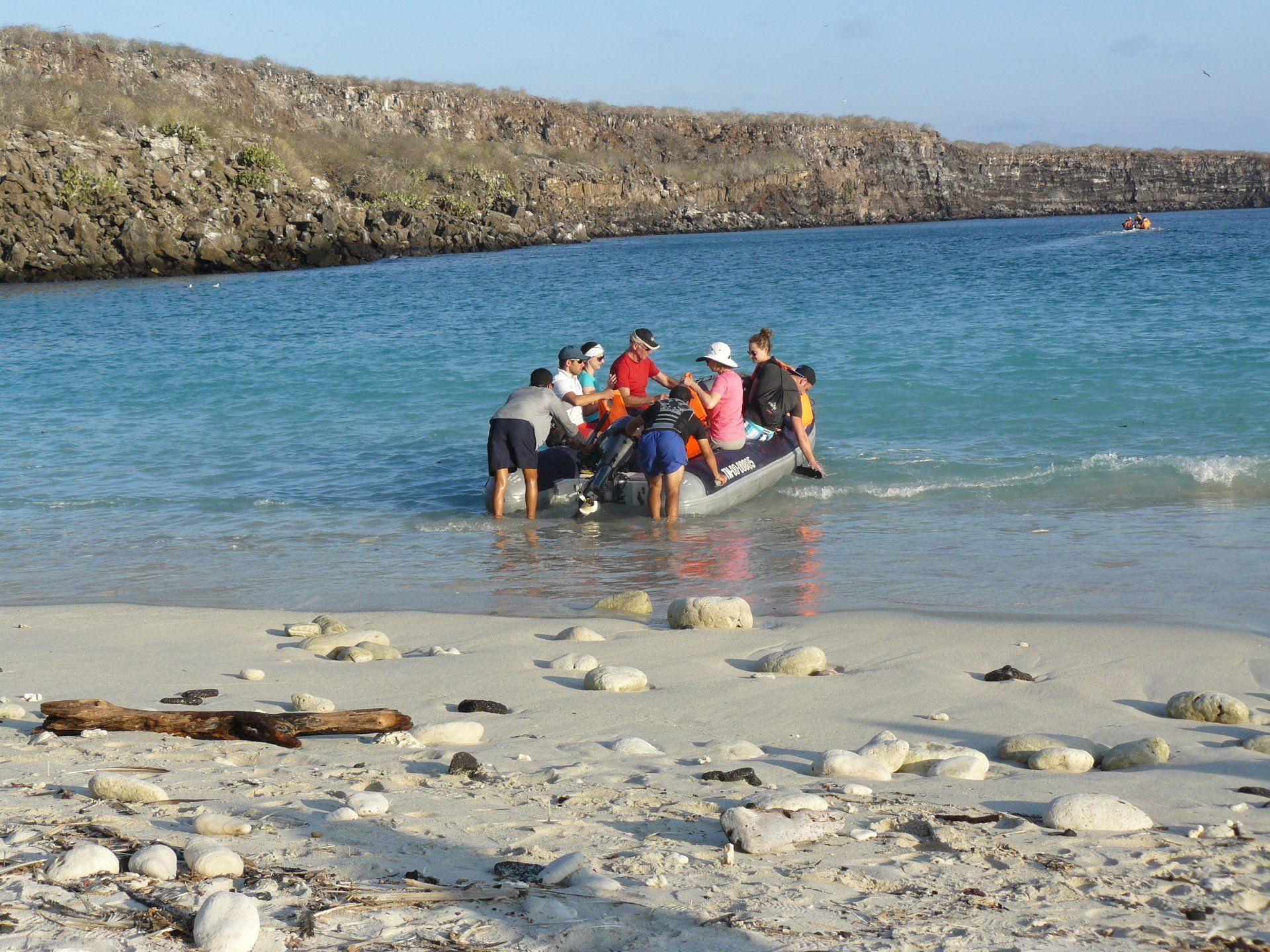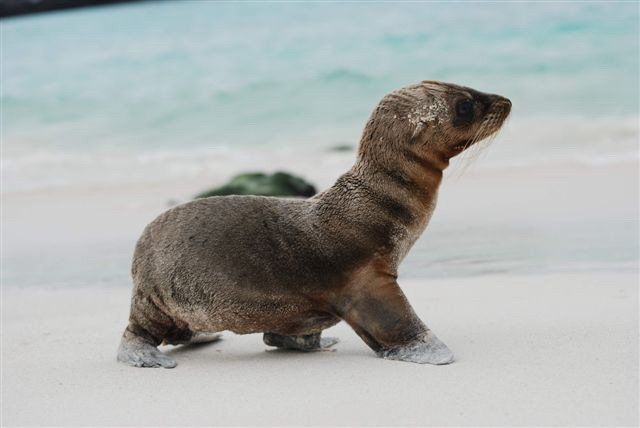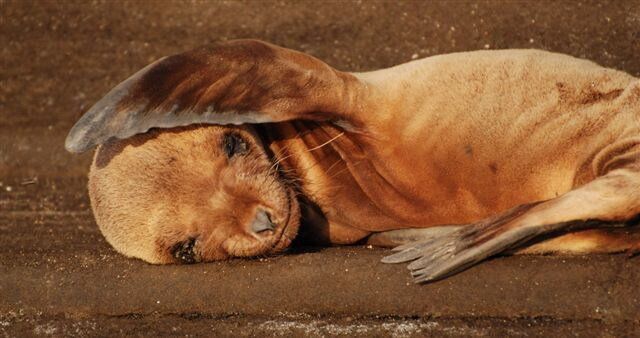Day 1 Arrive Quito
Your journey begins with a 2 night stay at an elegant, colonial style boutique hotel in the historical center of Quito, a UNESCO World Heritage Site.
Day 2 Colonial Quito
A tour of Colonial Quito reveals a city of narrow cobblestone streets lined with whitewashed walls and, rising above, the steeples and cupolas of the city´s many spectacularly decorated historic churches.
Quito has one of the best-preserved colonial centers in all South America and its integrity was assured in 1978 when the United Nations declared Quito a World Cultural Heritage site.
Day 3 Quito – Galápagos
A 3-hour flight takes you to Galápagos, where you embark on 8-day cruise aboard a catamaran or motor yacht. Settle into your cabin and enjoy lunch on board. After a safety briefing your adventure begins. All meals, daily activities and an English-speaking naturalist guide are included whilst on board.
For landlubbers we offer an island-hoping experience in boutique hotels and lodges, allowing you to discover a great variety of eco-systems and its wild inhabitants – above and below the water.
Days 4 – 9 Discover the Galápagos Islands
Under water, on land and in the air, the Galápagos Islands present a simply staggering portrait of nature at its greatest. Swim in the waters with penguins, sharks and a rainbow of tropical fish.
See giant tortoises, walk amongst innumerable marine iguanas, share a beach with sea lions, watch the courtship rituals of the blue-footed boobie.
Back on the boat, dolphins surf the bow waves while you kick back in a chill-out (lounger) on the top deck.
Day 10 Galápagos – Quito
Return to the airport for your flight back to the Ecuadorian mainland, where you spend a night in a quaint colonial style hotel, adorned with Cuenca art.
Day 11 To the Amazon
After a short flight and slightly longer drive to “El Puente” (the bridge), your journey continues by motorized canoe deep into the heart of the Amazon, enjoying the wide variety of flora and fauna along the Cuyabeno River before arriving at your lodge around dusk.
Days 12 & 13 Discover the Amazon
Discover the very essence of being in contact with the virgin forest by spending the next days at a lodge built in partnership with members of the local community, who have kept their ancient customs, traditions and natural medicines. Travellers have the opportunity to visit and bake bread in the village, and the lodge employs community members and they share in the profits.
The lodge consists of 12 comfortable double rooms featuring private bathrooms with hot running water, bio-degradable soap and shampoo, purified drinking water and insects nets.
Facilities at the lodge include a dining room, a bar offering a variety of alcoholic and non-alcoholic beverages, a lounge with comfortable sofas and hammocks, and the stargazing octagon.
Morning and afternoon excursions include:
• Navigating upstream by motorized canoe towards “Laguna Grande” (Big Lake), while looking for monkeys, pink river dolphins, caymans, Morphos (giant blue butterflies) and many more species of flora and fauna. For the brave-hearts there is an opportunity to swim in the lake with Piranhas – a refreshing experience!
• Trekking along the Palma Roja (Red Palm) path for an up-close encounter with primary rainforest.
• Travelling downstream by motorized canoe and search for exotic birds such as Toucans, a variety of Macaws, blue-tailed Emeralds, Hoatzins and Amazon Kingfishers, to name a few.
• Visiting the local village and the opportunity to make Bannock bread from the root of a plant and to meet the local Shaman and his family. If you like you can even participate in a healing ceremony.
Day 14 Amazon – Otavalo
Time to catch your breath and revitalize the senses. Enjoy the next few days at a restored 17th-century hacienda, located at an altitude of 8.500ft/2.600m in the Ecuadorian sierra. This private estate, surrounded by beautiful gardens is situated near the Equatorial line and the market town of Otavalo.
Day 15 Relaxing at a Hacienda
A day at leisure to enjoy the typical life on a Hacienda. Guest rooms and garden cottages are furnished with antiques and Andean crafts, with log-burning fireplaces & beamed-ceilings, overlooking several acres of landscaped perennial gardens, ancient trees, and often snow-capped mountains.
Relax in the library, reading-room or exert some energy playing ping-pong or squash, take a swim in the pool or try one of many walks and self-guided tours to the surrounding volcanoes and crater lakes.
Of course every hacienda has horses, guinea pigs, chickens, turkeys, rabbits and geese.
Afternoon tea is served in the garden to take in the sunset. Then enjoy a fireside cocktail before your candlelight dinner and check out the night sky before falling into your comfortable bed, thoughtfully prepared with a hot-water bottle.
For the more energetic traveller we suggest:
• A walk around Cuicocha Crater Lake – with prolific flora and panoramic views.
• Climbing to the top of Fuyafuya, a volcano in the mountain range of Mojand. It’s a stiff uphill climb and you’ll be reward with spectacular views.
• Visit the partially excavated 9th century earth pyramids of Cochasqui
Day 16 Your Ecuador Adventure comes to an end
Enjoy your last morning in the Andean Highlands before being transferred to Quito airport for your onward flight.
Optional extension: Cloud Forest Retreat
The cloud forest of the Ecuadorian Highlands offers beautiful scenery and forest trails are lined with Bromeliads and orchids. Hummingbirds and tanagers, toucans and ant pittas all vie for your attention.
Also termed the pre-montane/subtropical rainforests, these cloud forests cover the slopes of the Andean mountains from 900 meters to about 2,500 meters. They are forests of high biodiversity, with a variety of little-studied wildlife and plants. Overnight in comfortable, rustic accommodation and relax here for the next 2 days.
This safari can also be combined with a visit to Cusco and Machu Picchu in Peru.
Contact Ecuador Travel Specialist, Christine Boecker to arrange your Ecuador Safari

